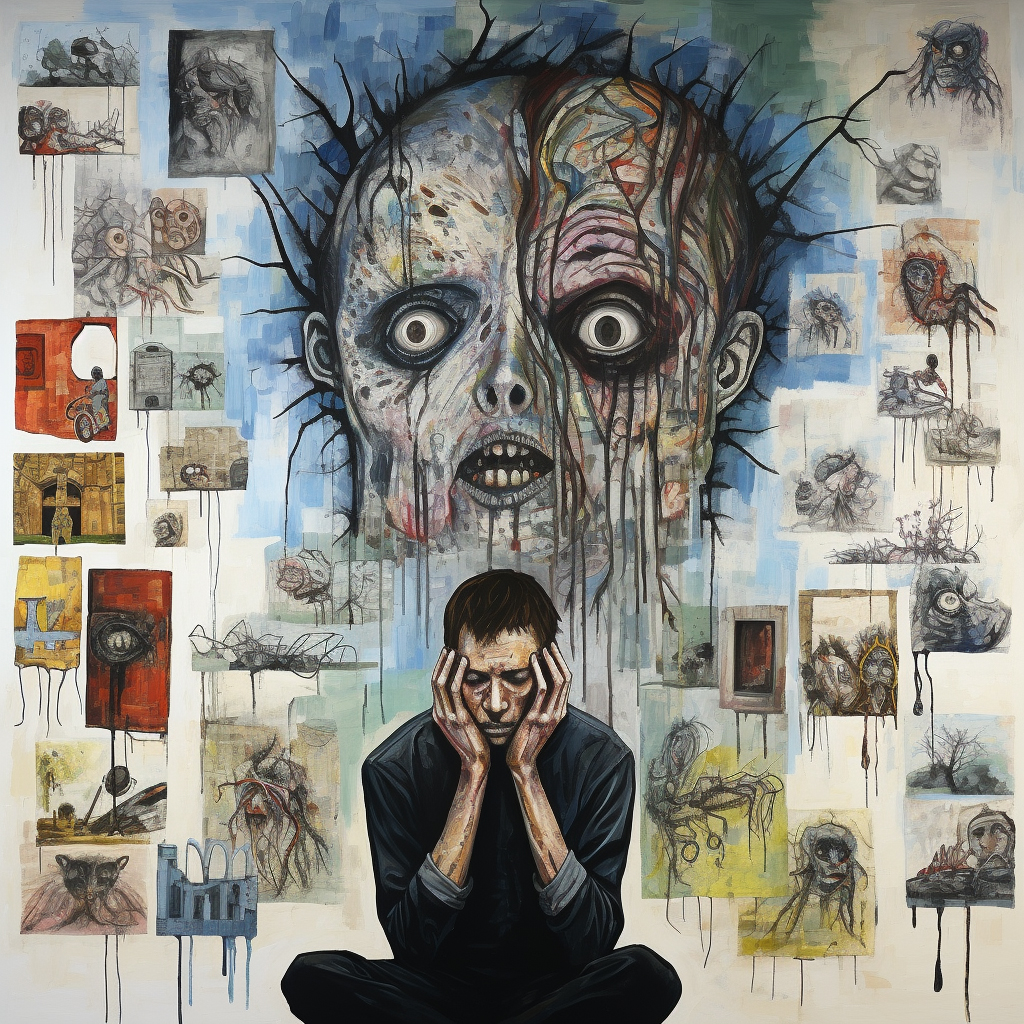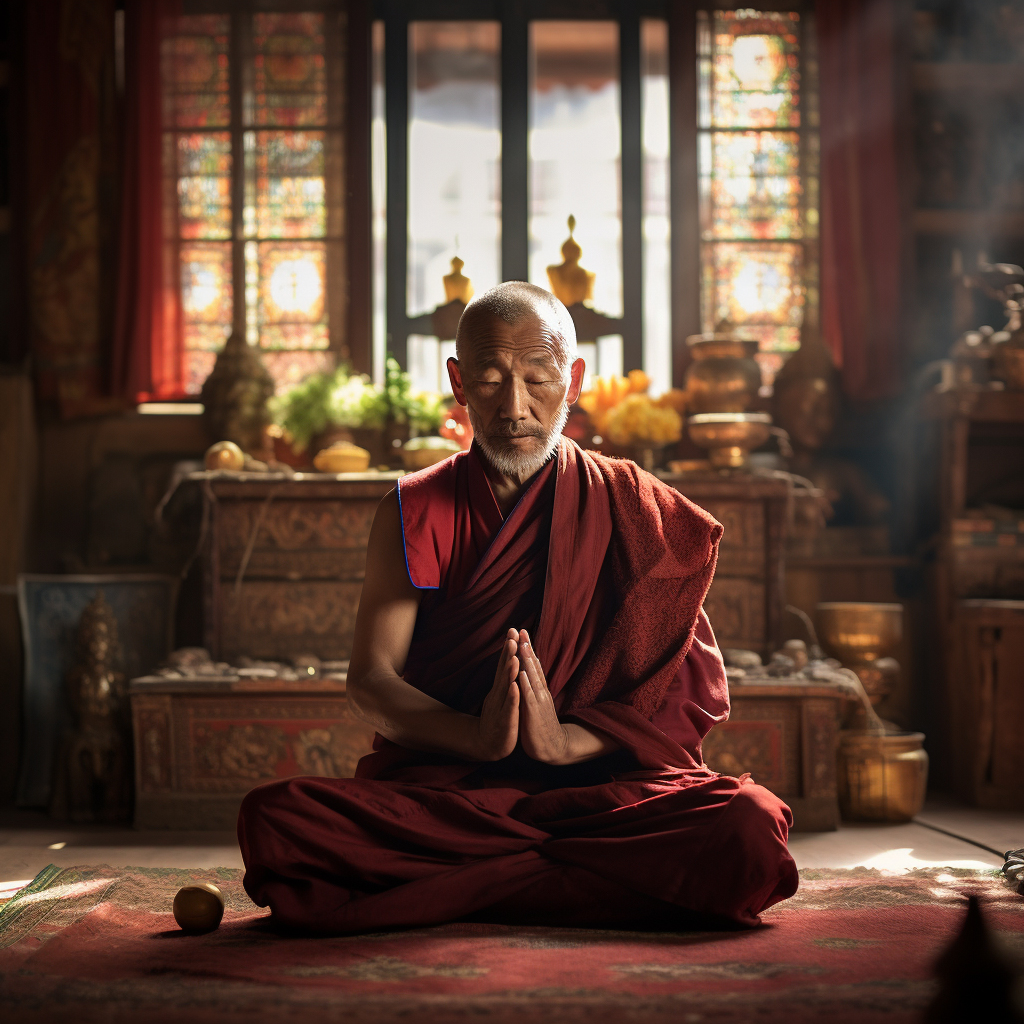The Buddha’s encounters with suffering and his quest to understand and alleviate it, leading to the foundational Buddhist teachings on the universal nature of suffering (dukkha).
The Traditional Story of the Buddha
When a prince named Siddhārtha Gautama was born, the mystic seers of the time told the royal family that Siddhārtha would either become a great king or a great spiritual teacher.
At this age in history, Northern India had witnessed a number of noble princes turning their back on wealth and power and embracing Jainism, a religion focused on non-violence and asceticism, the renunciation of all worldly possessions.
Siddhārtha Gautama’s father was determined not to let his young prince fall under the influence of Jainism, so he sheltered him from all unpleasant experiences and provided him a life of unparalleled luxury in hopes that he would become so accustomed to his princely life that he would never consider becoming a Jainist.

Siddhārtha came of age in the luxury and safety of his father’s palace, and per his father’s wishes, he was sheltered from all the unpleasant realities of life.
When Siddhārtha left the palace for the first time, he encountered the “Four Sights,” an old man, a sick man, a dead man, and an ascetic.
From these four encounters, he learned that youth and health are temporary; everyone gets sick, and everyone dies. His wealth and power couldn’t prevent that. Further, much to his father’s chagrin, he saw an ascetic who appeared serene and peaceful.
The way this story is traditionally told, the “Four Sights” inspired him to embark on a spiritual quest to find the path to liberation from suffering, aging, sickness, and death.
A Speculative Addition to the Buddha Story
In my opinion, the traditional story is incomplete. First, it seems unlikely that Siddhārtha was completely unaware of the realities of life, and he likely knew about the other princes who left palace life behind in pursuit of a life of inner peace.
Second, despite his life of luxury and indulgence, he must have been dissatisfied and unhappy. His father was not foolish to believe a life of luxury and indulgence would form stubbornly strong attachments and essentially trap Siddhārtha in royal life.
What drove the young prince to follow the path of the Jainist princes before him was his unhappiness and dissatisfaction with life. Despite the many pleasures of palace life, he found happiness fleeting and pursuing it a futile waste of time.

He came to see suffering as the central problem of the human condition, and he correctly reasoned that if suffering impacted his life, given all that was provided for him, then suffering must be a pervasive problem that touches everyone.
If he could solve the problem for himself, he would have given his life the meaning and purpose that he felt it lacked, and he would find unshakable happiness and peace of mind independent of his worldly circumstances.
In my opinion, the traditional story fails to capture his real motivation, the desire to relieve his own suffering. While it’s wonderful to think he was completely selfless and altruistic in his desire to solve the world’s problems, the accounts of the Buddha’s life also record that he did nothing to teach this to others for seven weeks after his enlightenment.
The reason given is that he was concerned that the profound insights he had realized under the Bodhi tree might be too difficult for others to understand. It’s also plausible to believe he might have been content with his own enlightenment and only later decided to share his method with the world.
The latter explanation is more human, and more realistic, albeit somewhat less flattering. After he decided to share his insights with others, he went on to give an estimated 84,000 teachings, so he certainly embraced selfless giving after the fact.
The Buddha was a man. He vehemently denied he was a God, though many still deify him. I don’t feel it diminishes him or his accomplishments to admit he was a man, driven by the selfish desire for enlightenment.
The fact is that he achieved it, and he selflessly devoted the rest of his life to teaching others how to achieve it too. It’s certainly an accomplishment worth emulating.
Buddhist Teachings on Suffering
The reason this post opens with an extended story of the Buddha’s life is because the problem of suffering was the main motivation for his enlightenment.
The Buddha explored every avenue for resolving the problem, which means he explored every type of suffering imaginable.

The first noble truth in Buddhism acknowledges the fundamental reality of suffering or unsatisfactoriness (dukkha) in human existence. It’s important to note that the term “suffering” doesn’t fully capture the depth of dukkha, as it encompasses a broader range of human experiences and conditions as described below.
Three Types of Dukkha:
- Dukkha-dukkha: This is the most obvious form of suffering, referring to physical pain, illness, aging, and death. It’s the type of suffering that everyone can readily recognize.
- Viparinama-dukkha: This refers to the suffering caused by change and impermanence. Even pleasurable experiences eventually change or end, leading to a sense of loss or dissatisfaction.
- Sankhara-dukkha: This is a more subtle form of suffering, related to the inherent unsatisfactoriness of conditioned existence. It includes the idea that our attachment to things, ideas, and our sense of self can lead to a sense of discontent and suffering. Even our pursuit of desires and ambitions leads to anxiety and feelings of lack.
Sources of Suffering (Dukkha)
Tibetan Buddhist teachings influence the list below with a few additions most can relate to and a few deletions that most would not.
Birth
People typically don’t remember the trauma of their own birth, but since Buddhism comes from a culture that accepts a cycle of rebirth, they provide detailed descriptions of the pains everyone experiences.
It would be traumatic to be forced out of the comfortable home of a mother’s womb, suddenly experiencing sights, sounds, and new tactile sensations. Even breathing is a new experience.
People have no idea what’s happening, and they are completely helpless. If not for the care of loving parents, people would die as infants.
Teenage Angst
Though not specifically mentioned in Buddhist texts, the difficulties of transitioning from dependence to independence are rife with anxiety and suffering.
Teenagers are particularly concerned with reputation and what they imagine others think about them and are prone to think the worst.

Middle-Age Struggle
In mid-life, most people struggle to provide for children and tend to worldly concerns. The focus on making their mark in the world subjects them to the worldly winds of pleasure and pain, praise and blame, gain and loss, fame and disrepute.
Aging and Decline
With advanced age, assuming people live to see an advanced age, people endure an inevitable decline in their faculties. Memory fades, the brain doesn’t process information as quickly, and the body deteriorates and becomes more susceptible to disease.
The onset is inevitable and irreversible, and this knowledge brings sadness and frustration to everyone.
Sickness and Pain
Physical pain and illness are part of the human condition, resulting from the impermanent and changing nature of the body.
Pain is a red alert that can’t be turned off. Pain makes it difficult to maintain a positive outlook and often hinders people from activities they enjoy.
If a condition is chronic, or the prognosis for continuing deterioration, pain can lead to depression.
Fear of Death
Nobody is certain what happens after death. Most religious traditions provide teachings and beliefs intended to provide comfort as people approach death, but lingering uncertainty remains.
Plus, everyone has a basic survival instinct to stay alive, and as death approaches, it’s rarely greeted with enthusiasm. Fear of death, to some degree, is part of the human condition.

Encountering what is unpleasant
Nobody wants to suffer, yet we all do. Whenever we encounter something we find undesirable, we try to push it away, often becoming angry, which disturbs our minds.
When we focus attention on what’s unpleasant, we expand and extend the negative experience, sometimes ruminating on unpleasant people or circumstances continually in a focused yet uncontrolled meditation.
Separation from what is pleasant
When we encounter something pleasant, the natural instinct is to grasp after it and want more. We easily become attached to pleasant experiences, objects we enjoy, and people who please us.
When we are unable to enjoy experiences, objects, and people, we become angry and experience the sadness of loss. Since everything changes, loss is part of daily life.
Not getting what you want
We all want things. We need food, shelter, and medicines if we’re ill. But whether we want or need things, we don’t always get them. In fact, since our desires are endless, we fail to obtain what we want far more often than we succeed in satiating our desires.
Failing to obtain objects of desire is frustrating and disappointing, disturbing our minds.
Anxiety of change and uncertainty
On exceedingly rare occasions, people obtain everything they want, and in that moment, they are gripped with the desire to preserve what they have forever.
Unfortunately, change is constant, and we are constantly being separated from what is pleasant, and we obtain what we find unpleasant. Our desire to preserve what we have is never satisfied for long.
Change is certain, but what change will bring into our lives is uncertain, and this uncertainty is a source of anxiety. The more we cling to the past or present, the stronger this anxiety grows.
Insatiability of desire
Even if we obtain objects of desire, the satisfaction is fleeting. The mind naturally moves on to the next item on the list, failing to appreciate whatever we’ve already obtained.
Most people spend their time in a state of lack, pursuing what they don’t have rather than feeling gratitude and appreciation for what they possess. This is the primary source of unhappiness for most people.
Repeatedly descending from high to low
Life is not a steady progression where one accumulates beauty, fame, and wealth.
Some people work out and diet to improve their health and appearance only to lose it for lack of discipline, ill health, or a change in their circumstances.
Some people achieve fame only to find themselves “canceled” for some transgression later on.
Some people obtain great wealth only to lose it later due to poor investments, or unwise lifestyle decisions.
There is pleasure and pain, praise and blame, gain and loss, fame and disrepute.

Loneliness and isolation
Most people desire family, friends, and community, but they often fail to obtain them. Alienation, the sense of separation from others, is a defining feature of human life.
Even those who’ve cultivated all these things can outlive their friends and family and end up dying alone, disconnected from all that they knew.
The First Noble Truth
The first noble truth invites us to recognize and accept the inevitability of suffering in life as a starting point for understanding and addressing the causes of suffering, as outlined in the subsequent noble truths.
The Buddha wasn’t concerned with debating philosophy or providing opinions about the existence or non-existence of Gods. Buddhist faith concerns faith in process, not in the existence of imaginary beings.
Many have argued that his teachings aren’t a religion because the Darhma is only concerned with how to end the suffering of dukkha. Everything the Buddha taught is a means to that end.
In essence, the first noble truth teaches that suffering is a universal human experience and the foundation upon which the entire Buddhist path to liberation and enlightenment is built.

Meditation on the First Noble Truth
The purpose of this post is to clearly demonstrate that the sufferings of human life can’t be avoided.
This realization should generate a sense of futility in applying excessive effort to worldly pursuits with the goal of creating lasting happiness in his life.
When you realize lasting happiness can’t be achieved through worldly attainments, you should be motivated to liberate your mind from Samsara and end suffering in this life by preparing for future lives.
Contemplation
Consider what you read in this post and focus on the following first-person narrative:
There is no benefit in denying the sufferings of this life. In order to find happiness in this life, I must prepare for my countless future lives while I have the opportunity.
I must liberate myself from suffering in this life and in all future lives. If I don’t apply effort to this task now, my human life will be empty of meaning, there is no greater deception and no greater foolishness. I must put effort now into liberating myself permanently from this life and my countless future lives.
Object of Meditation
You meditate on this determination continually until you develop the spontaneous wish to liberate yourself permanently from the sufferings of this life and countless future lives.
You should hold this determination in your mind for as long as possible.
When out of the meditation session, pay attention to how the various sufferings manifest in your life. They will serve as a reminder of your determination to eradicate suffering once and for all.
This feeling is the realization of renunciation, the entry to the Buddhist path, and the purpose of the intermediate scope of Lamrim.

